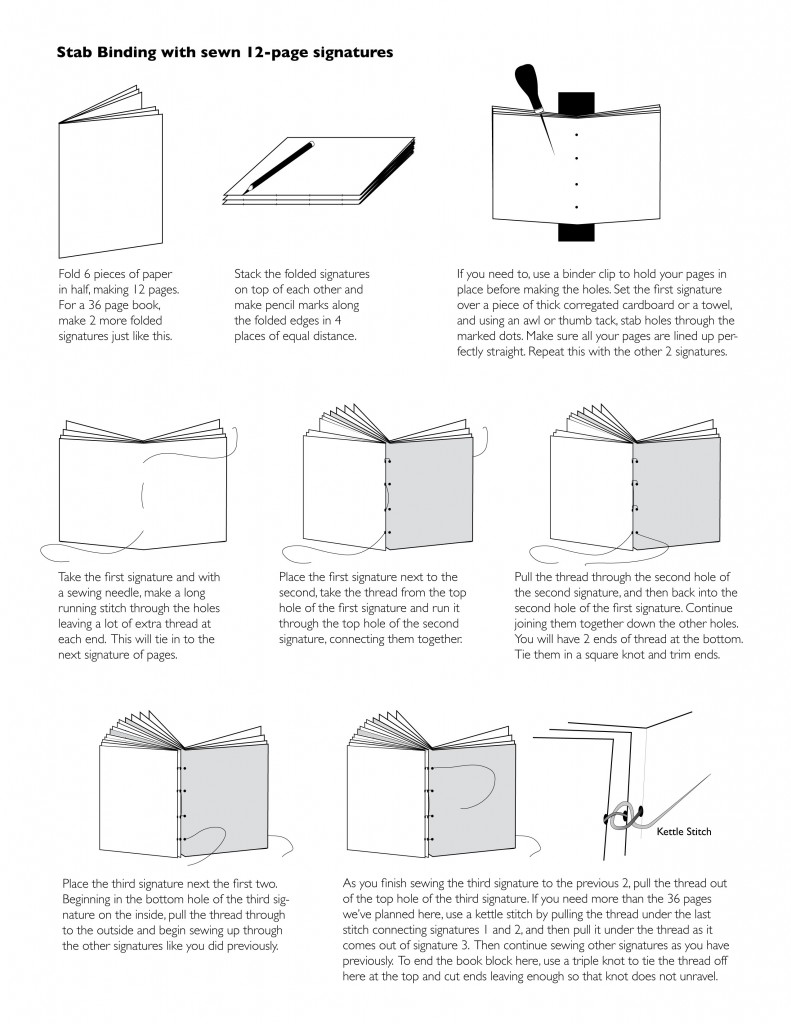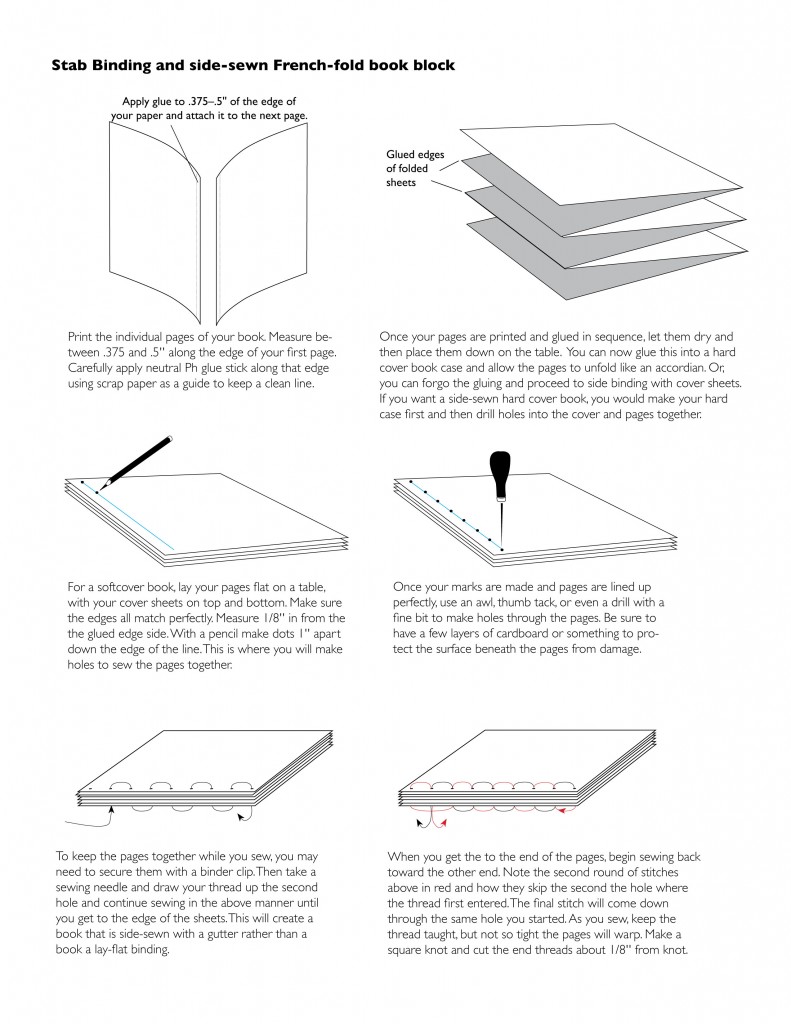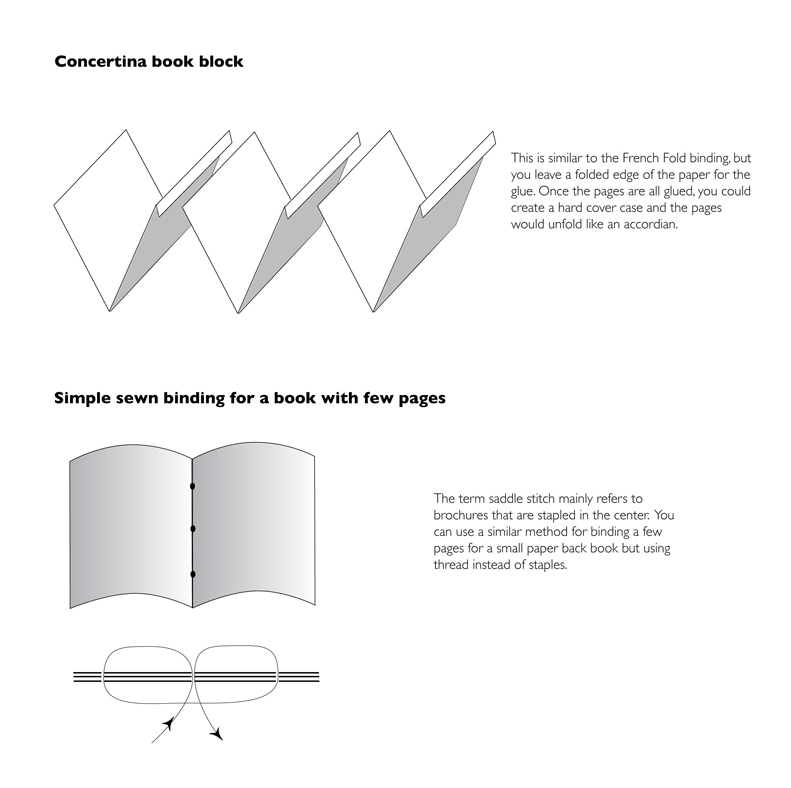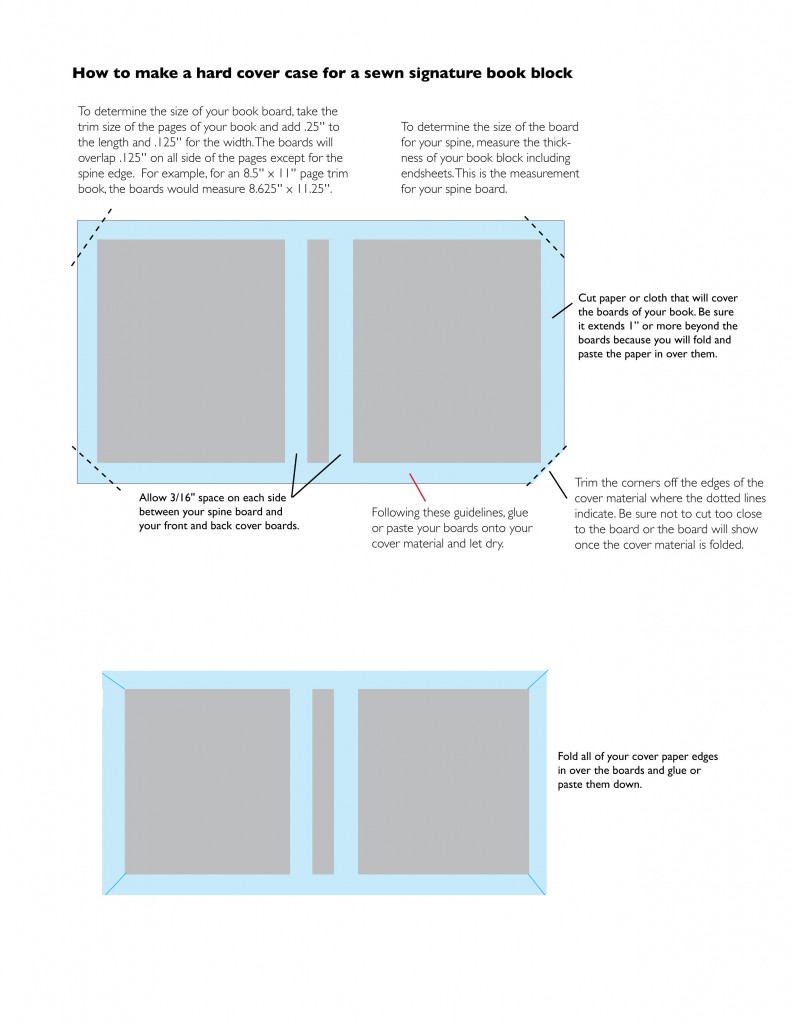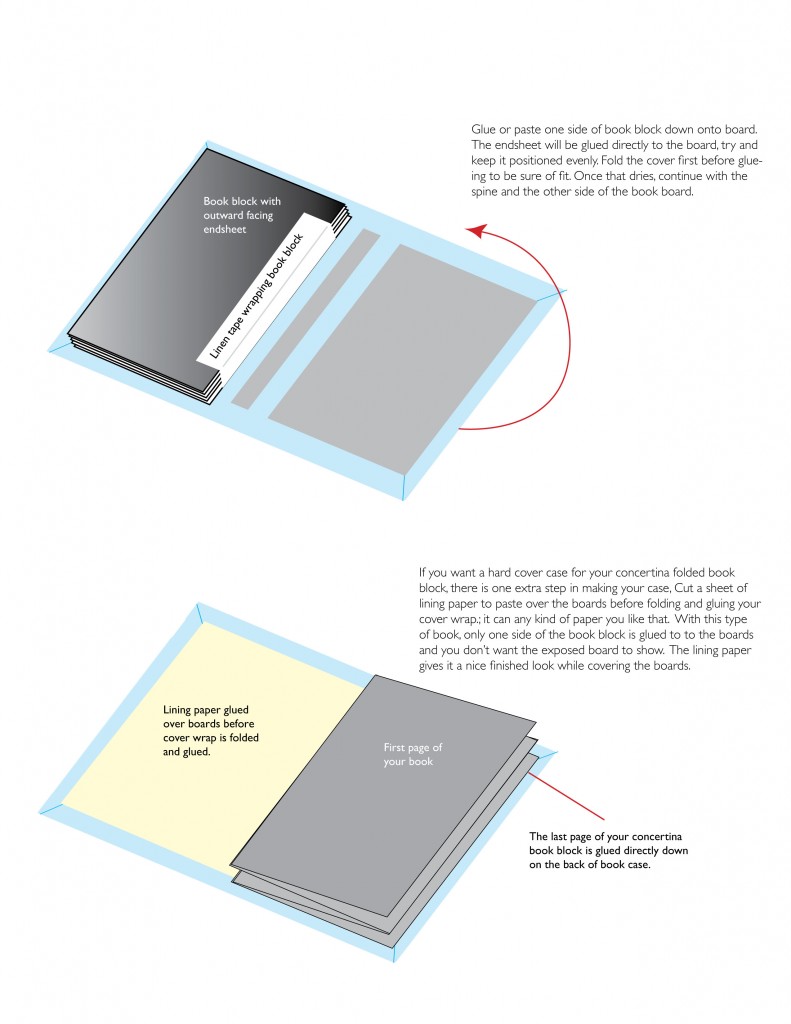Handbound Books
There are times when you might want to produce a small number of limited edition hand-bound books. While time-consuming, it isn’t difficult to do and it can a very rewarding experience. There are many methods and techniques so search for books on the subject, look at online video demonstrations, or check with your local art centers, colleges, and supply stores to see they offer any workshops. Once you are finished with your books, hand number each one in your edition: 1 of 50, 2 of 50 etc.
In this section, I have included a few methods for hand-binding books with a paper or cloth-covered hard case. The binding styles included here are: stab binding with sewn 12-page signatures, stab binding with a side-sewn French-fold, concertina glued fold, and a simple sewn method for binding a few pages for a small book. Below is a list of acid-free archival materials and where to purchase them.
Archival Bookbinding Materials
Glues and Paste
The best glue to use is PVA book binder’s glue. It is a water-based synthetic that is Ph neutral and low water content so that it won’t warp and buckle paper. Do not use Elmer’s glue, while it is considered PVA it has a high water content and some feel it is more acidic.
Another option is to make your own wheat paste. It’s Ph neutral, works really well, but keep in mind that it does contain starch which can attract insects. Here is a recipe:
• 1 Tbsp. Wheat starch • 5 Tbsp. distilled water
1. Place wheat starch and water in a bowl and microwave on high for 25–30 seconds.
2. Remove and stir well.
3. Microwave again on high for 25–30 seconds.
4. Remove and stir well.
5. Repeat steps 2–4 for another 2 to 3 minutes.
6. Let paste stand for 2–3 minutes to cool and thicken.
7. Next you will strain the paste. But if the consistency is too thick at this point, you can thin with a little more distilled water and let it set for about 15 minutes.
8. Strain through an old nylon stocking, some organza, or several layers of cheesecloth.
You can also purchase a ready-made paste called Yes Paste.
Thread
For sewing your pages, you can use bookbinders’ linen thread, waxed linen thread, upholsterers’ thread, or carpet thread. Do not use dental floss and do not use regular sewing thread as it isn’t strong enough. Other decorative threads can be used if they don’t stretch too much and if they are strong.
Board for Hard Cover Books
Most board is not archival. Matte board is only archival on the surface so you don’t want to use that. The two best options are Museum board and Davey brand board which is a little heavier than chipboard. You can find these easily in art stores, archival supply shops, or online.
Instead of using board as a book cover, you can also use metal, buckram, foam board—be creative!
Online Sources for Materials
www.hollanders.com/supplies
www.talasonline.com
www.volcanoarts.com/cart/bookbinding
www.danielsmith.com
www.articusstudiodesign.com
www.artpaper.com
